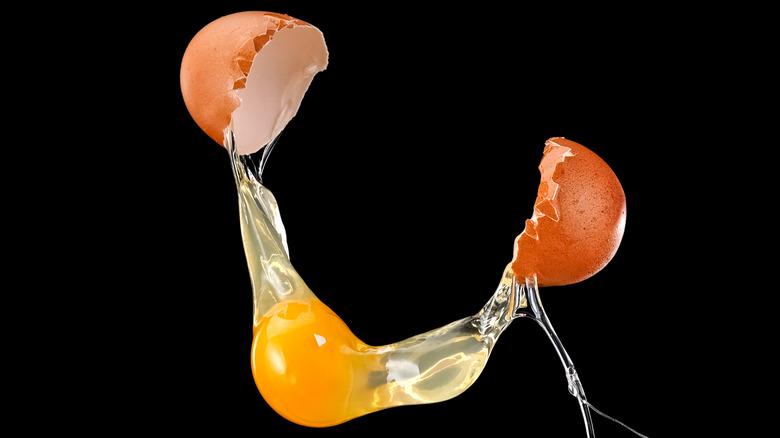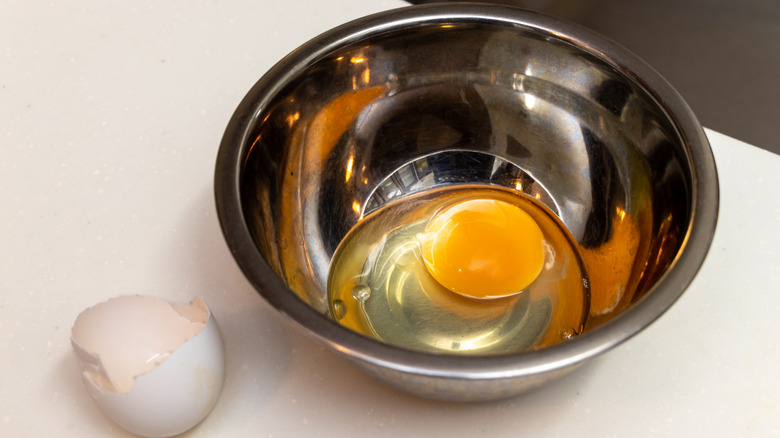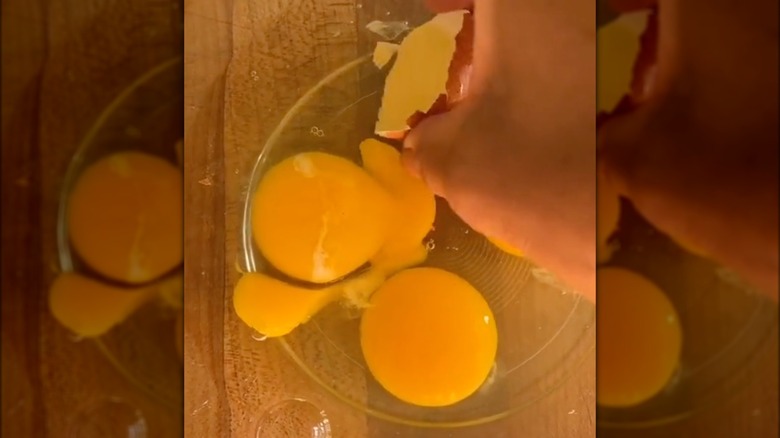Why It's A Mistake To Crack Eggs On The Edge Of Your Counter
Most of us were taught as kids to crack eggs against the edge of our countertop or the lip of a bowl, but after you've fished out enough shell fragments from your eggs over the years, you realize there must be a better way.
Gently, repeatedly tapping eggs against a rounded surface like the edge of a countertop causes many tiny fractures in the shell, which are pushed into the egg when you separate the shell with your thumbs. And while cracking an egg on a bowl's rim makes sense if you're trying to be neat, inevitably, this method leaves egg whites dripping down the bowl's side and egg all over your fingers as you hunt for the shards.
This practice also tends to pierce the yolk, which is a problem if you need to separate the yolk and white for a recipe. Since salmonella can be found on the egg's shell, according to the CDC, introducing tiny fragments into the egg can also lead to food-borne illnesses if the eggs aren't cooked until firm or are used raw.
The best method for cracking eggs
It may seem counterintuitive since the shell is so fragile, but a single firm whack on a flat surface is the best method to crack eggs. You may have a small puddle of egg white on the counter afterward that you'll need to clean, but the odds are good that this would happen anyway.
To reduce the risk of digging out shell fragments, hold the egg in one hand and crack it on the countertop (not the edge) or table with one decisive smack to the egg's equator, the widest and weakest point of the egg. There's a sweet spot between crushing the egg and delivering a confident blow that makes one jagged crack along the equator.
Place the cracked egg over a bowl and use your thumbs to pry apart the shell. If you need to separate the egg, crack the egg into the bowl and use your hand like a sieve by gently scooping the egg yolk into your palm and allowing the whites to run through your fingers. This method is gentler than passing the egg back and forth between the two halves of the shell, since the sharp edges can pierce the egg yolk and waste the egg.
How to remove eggshells
Occasionally, even best practices leave us with shell fragments in our eggs. This occurrence has nothing to do with whether you use brown or white eggs. They are nutritionally identical and only differ in appearance since brown-feathered hens lay brown eggs, and white-feathered hens, well, you guessed it, lay white eggs.
It's a good idea to first crack eggs into a small separate bowl to catch any shell fragments. If you break many eggs, spotting those tiny pieces at the bottom of the mixing bowl becomes difficult. Transfer the eggs to the mixing bowl once they've been checked for shells.
If you find some shell fragments, rather than stick your finger or fork into the bowl to retrieve it, use a larger piece of the eggshell to scoop it out. The empty shell's jagged edge helps to trap the shards, rather than repel them as your finger does. Ensure you wash your hands with soap and warm water after handling eggs, and disinfect your cooking area to avoid cross-contamination.



